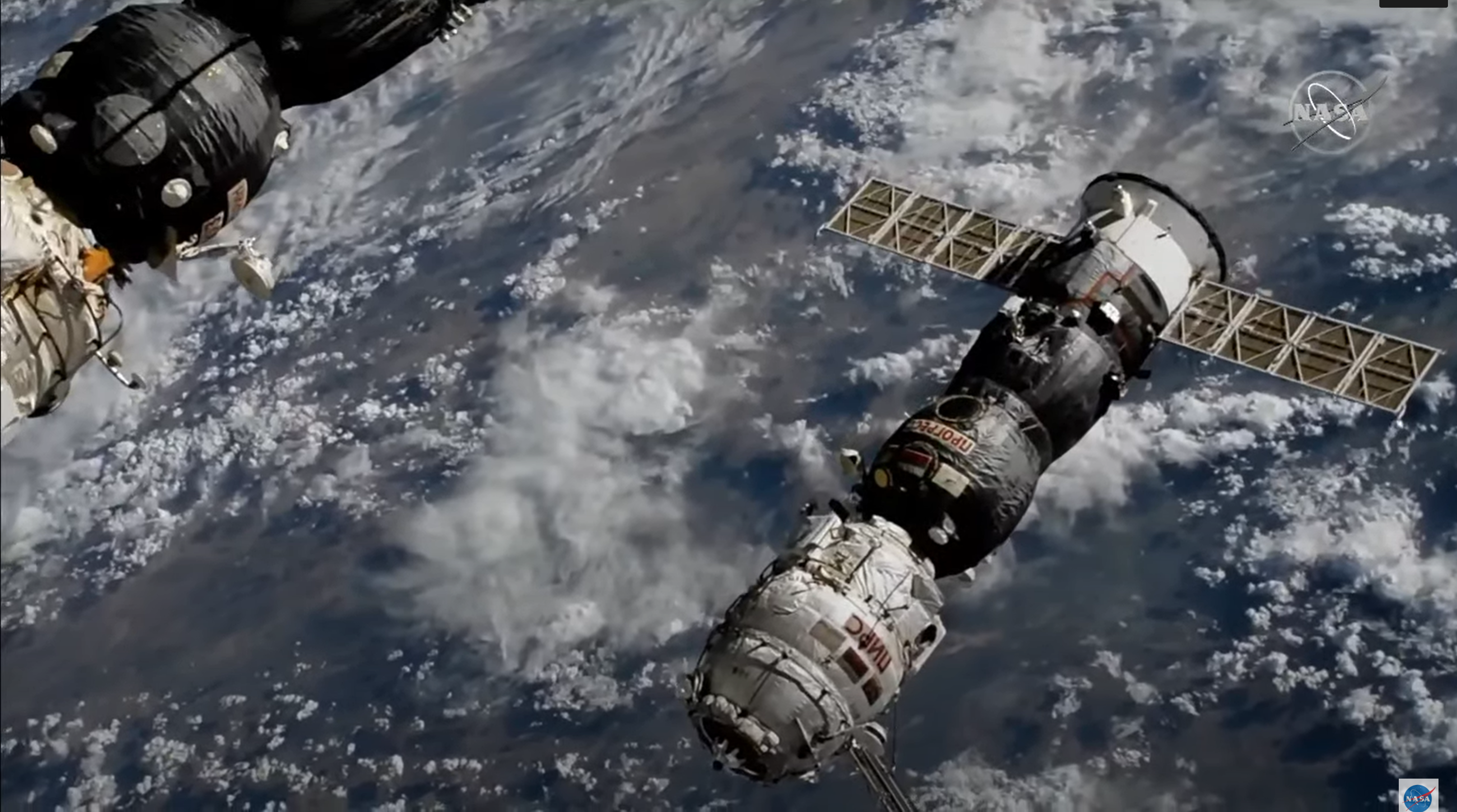
For SpaceUpClose.com & RocketSTEM
CAPE CANAVERAL, FL – Russia’s Pirs docking module was uncoupled from the International Space Station (ISS) on Monday, July 26, and decommissioned after 20 years of excellent service to the station – towed away by the Russian Progress 77 cargo ship to which it was joined in order to make way at the newly opened docking port for the “Nauka” science module from Roscosmos leading to significant upgrades in research work by cosmonauts.
The undocking of the Pirs docking compartment module and Progress 77 stack was finally accomplished at 6:55 a.m. EDT (1055 GMT) July 26 from a port on the Earth-facing (nadir) side of the Russian segment of the International Space Station.
Pirs departure was delayed from Friday, July 23 to Monday to allow Russian fight controllers more time to assess Nauka’s flight status and confirm its ability to dock as planned on Thursday, July 29 – 1 day prior to the Boeing Starliner unpiloted OFT-2 test flight launch for NASA to the ISS targeted for July 30.
“The unpiloted Russian Progress 77 cargo spacecraft undocked from the International Space Station while attached to the Pirs docking compartment at 6:55 a.m. EDT,” NASA officials confirmed during a live broadcast of the undocking shown on NASA TV.
Pirs has been part of the space station since September 2001, functioning as a docking port for Russian visiting spacecraft – Soyuz and Progress – and as an airlock for Russian spacewalks.
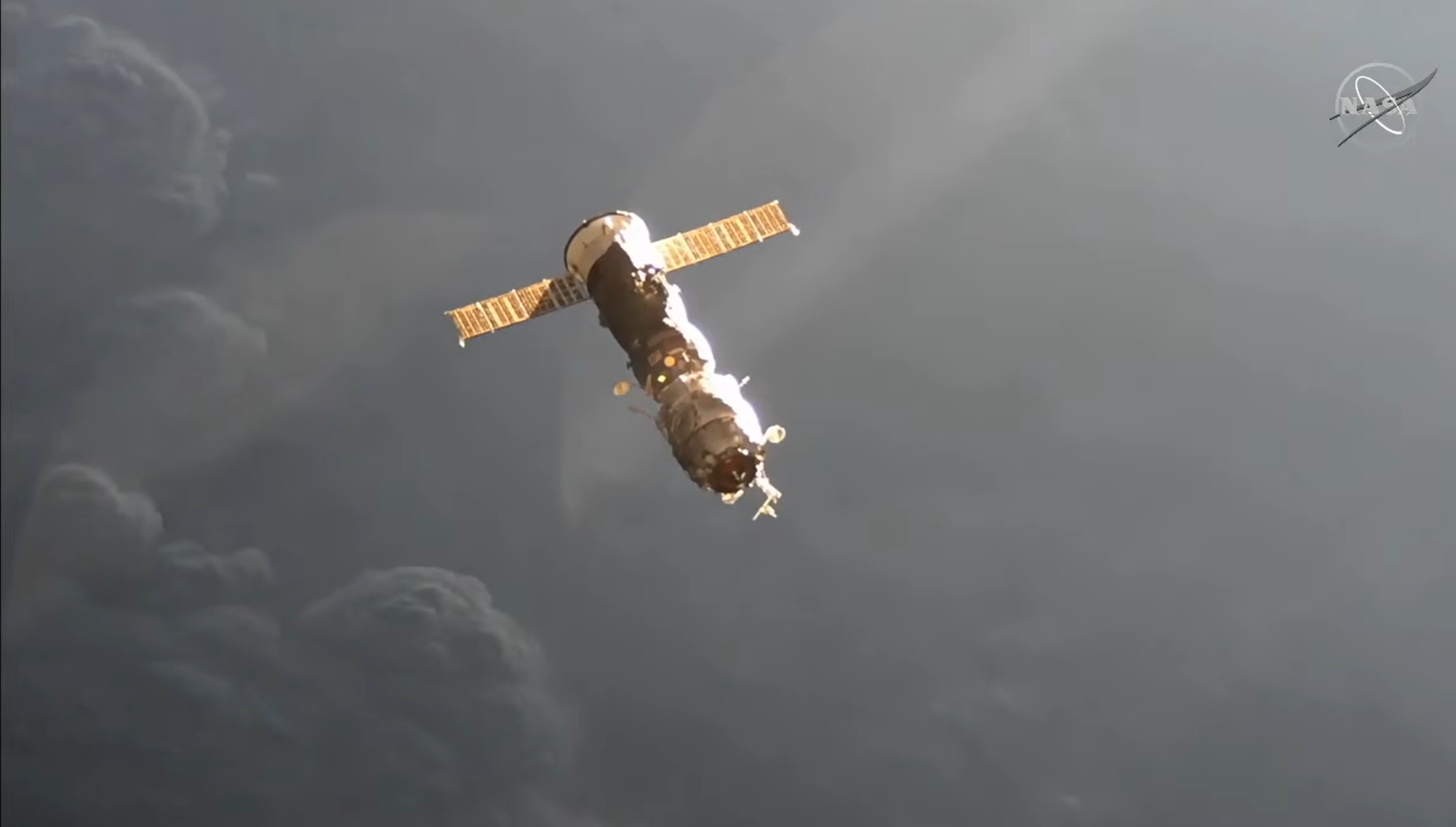
Photos of the historic Pirs undocking event were taken by Russian cosmonaut Oleg Novitskiy
“#Pirs was launched in 2001 being one of the ISS long-livers. It has worked as part of the Russian segment for almost 20 years. The module, built by #RSCEnergia, was used as an additional berthing port for Soyuz and Progress vehicles, as well as an airlock for spacewalks,” tweeted Roscosmos.
#Pirs was launched in 2001 being one of the ISS long-livers. It has worked as part of the Russian segment for almost 20 years.
The module, built by #RSCEnergia, was used as an additional berthing port for Soyuz and Progress vehicles, as well as an airlock for spacewalks. https://t.co/EqJeAHwm2g
— РОСКОСМОС (@roscosmos) July 26, 2021
Here’s a cool undocking video from Roscosmos and Oleg Novitskiy:
“A small video to your news feed: undocking of the #Pirs module from the International @Space_Station.”
И еще небольшое видео вам в ленту: отстыковка модуля #Пирс от Международной космической станции.
A small video to your news feed: undocking of the #Pirs module from the International @Space_Station. pic.twitter.com/CLnaQT1oeA
— Oleg Novitskiy (@novitskiy_iss) July 26, 2021
“Goodbye Pirs!” Novitskiy tweeted with more photos of the undocking
“Thank you for the 20 years of work as part of the Russian segment of the @Space_Station. During its operation, the module was used as a docking compartment for the Soyuz and Progress spacecraft, as well as for spacewalks from the Russian segment of the station.”
Goodbye #Pirs!
Thank you for the 20 years of work as part of the Russian segment of the @Space_Station. During its operation, the module was used as a docking compartment for the Soyuz and Progress spacecraft, as well as for spacewalks from the Russian segment of the station. pic.twitter.com/EveJBNyZpI
— Oleg Novitskiy (@novitskiy_iss) July 26, 2021
About four hours later the Progress 77 supply ship fired its maneuvering thrusters for a deorbit burn to place it on course for destructive reentry into Earth’s atmosphere and harmlessly burn up over the south Pacific.
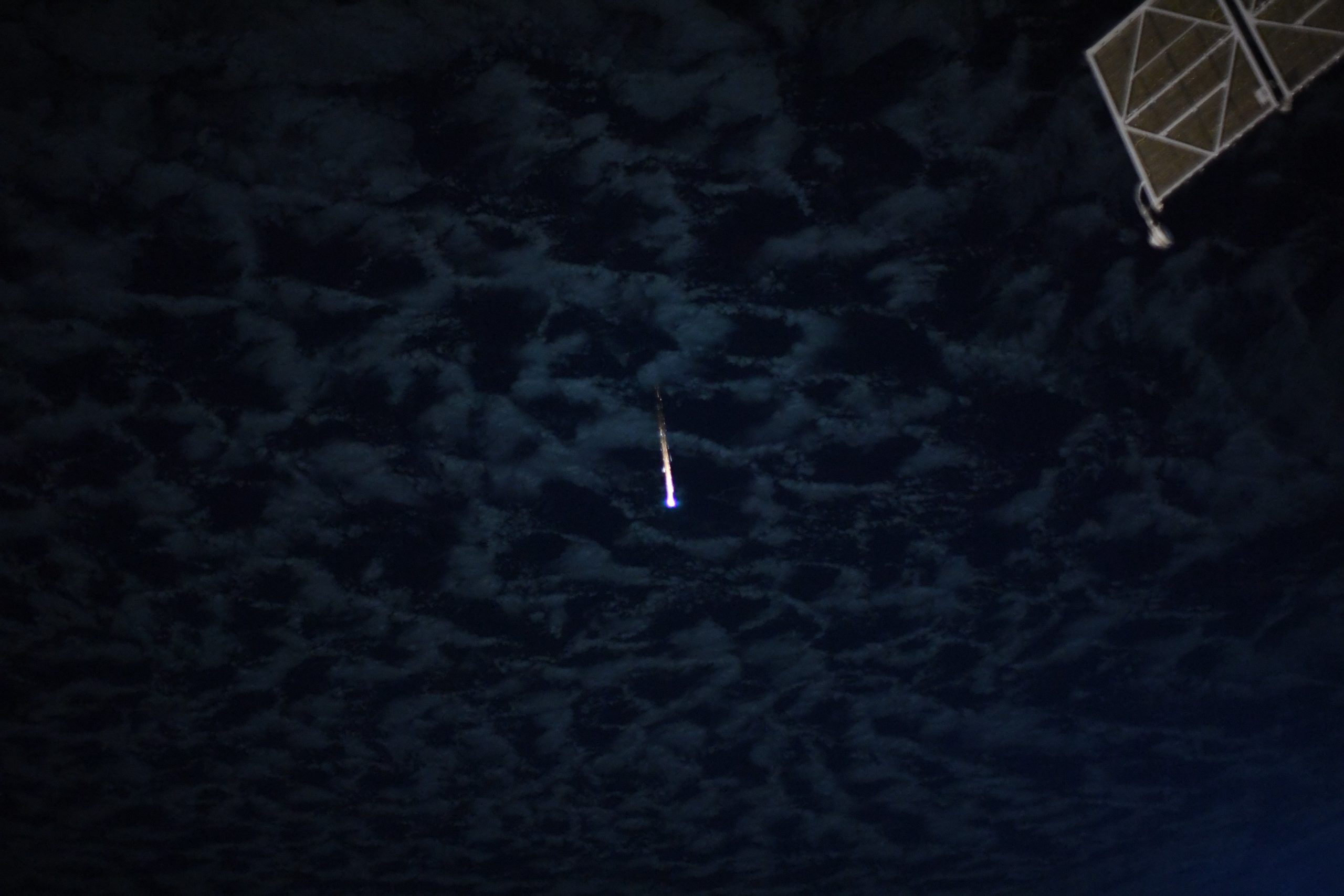
The Progress 77 mission launched and docked to the space station in February delivering more than a ton of cargo to the Expedition 65 crew.
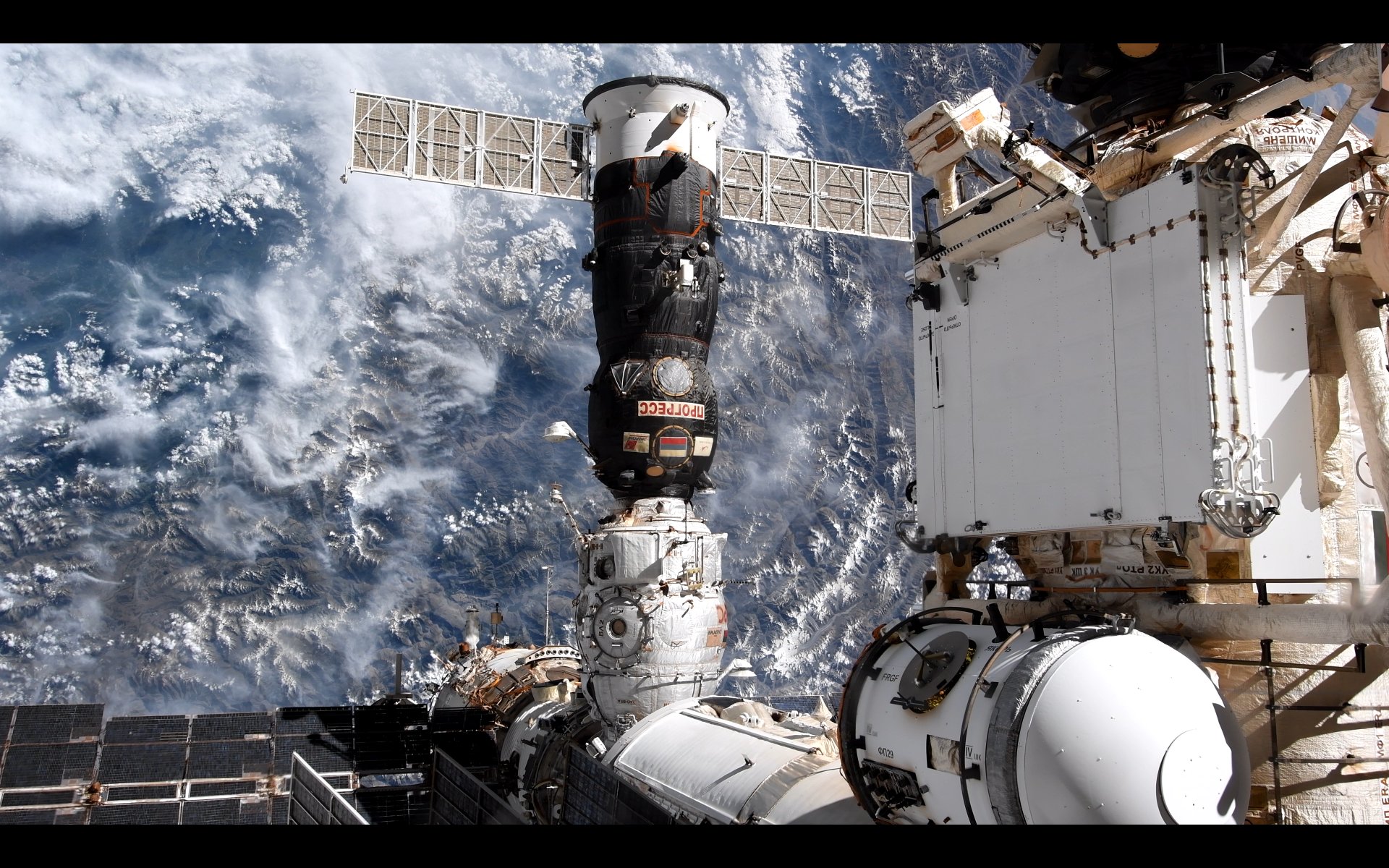
It’s been years in the making but Russia finally launched the “Nauka” science module to the International Space Station on July 21– marking their biggest addition since the early days of the Earth orbiting outpost and one that will significantly enhance cosmonaut research and capabilities.
The uncrewed Russian Multipurpose Laboratory Module (MLM) “Nauka” successfully and safely achieved orbit following launch at 10:58 a.m. EDT (1458 GMT, 7:58 p.m. Baikonur time) on a Proton-M rocket from Launch Pad 39 at Site 200 of the Baikonur Cosmodrome in Kazakhstan on Wednesday, July 21.
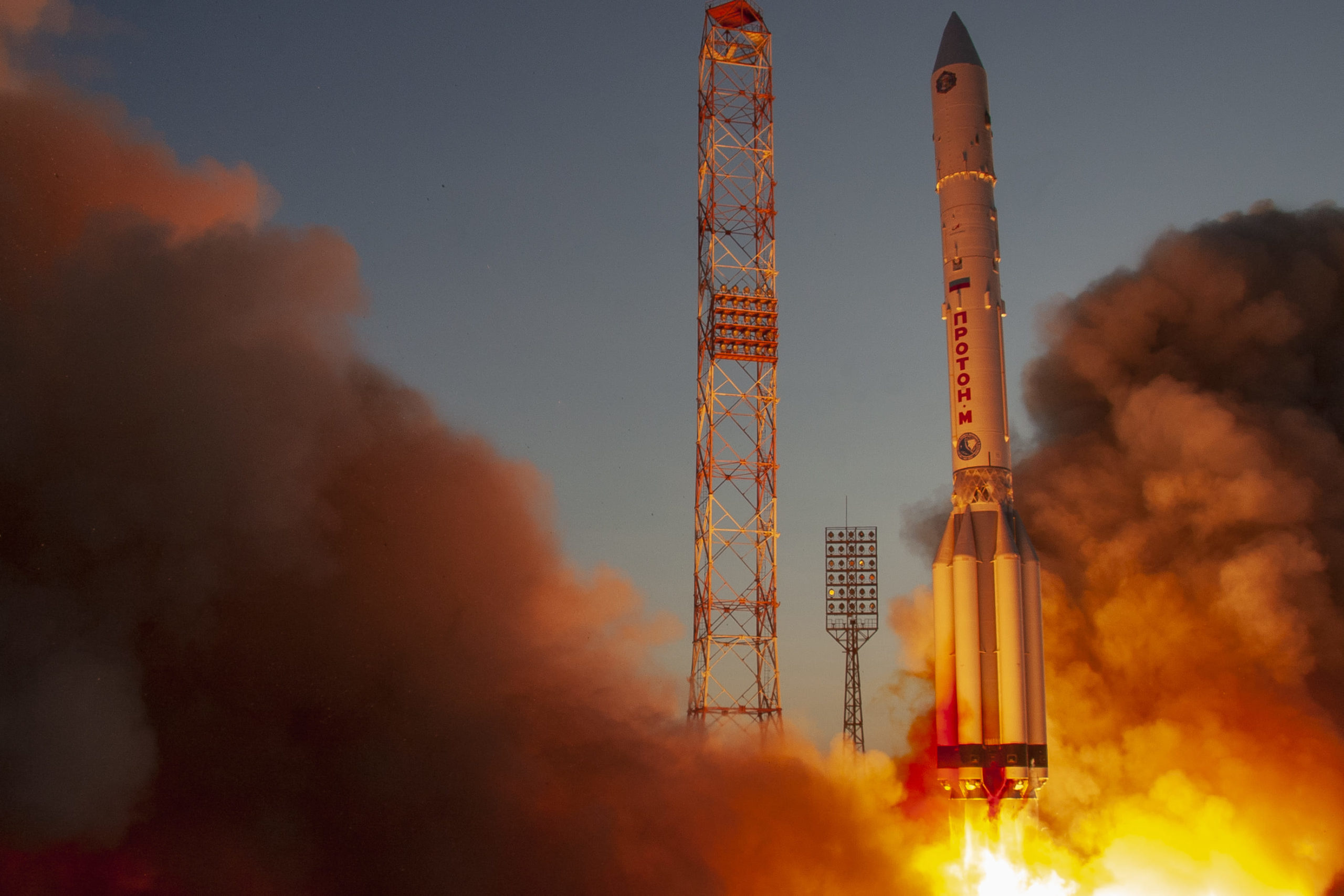
With the port on the Earth-facing side of the Russian segment station vacated by the departure of Pirs and Progress, Russia’s Multipurpose Laboratory Module (MLM) is scheduled to dock at the station Thursday, July 29.
Named Nauka, after the Russian word for “science,” MLM launched on July 21 and will serve as a new science facility, docking port, and spacewalk airlock for future operations.
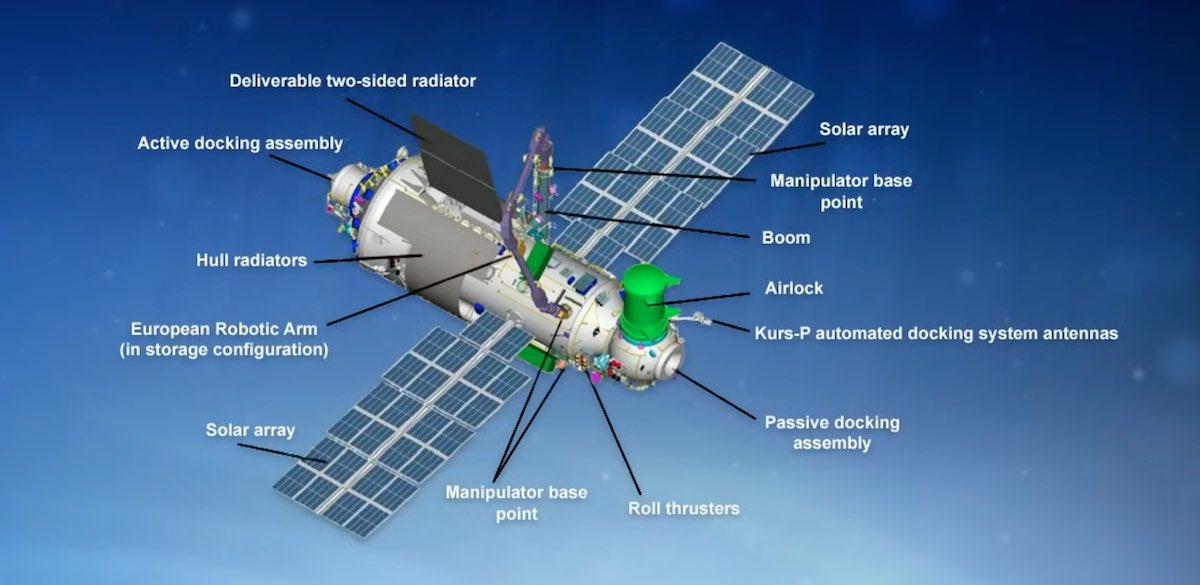
The long delayed pressurized Nauka module was originally planned for liftoff in 2007 and is a back up vehicle based on the Zarya Functional Cargo Block module
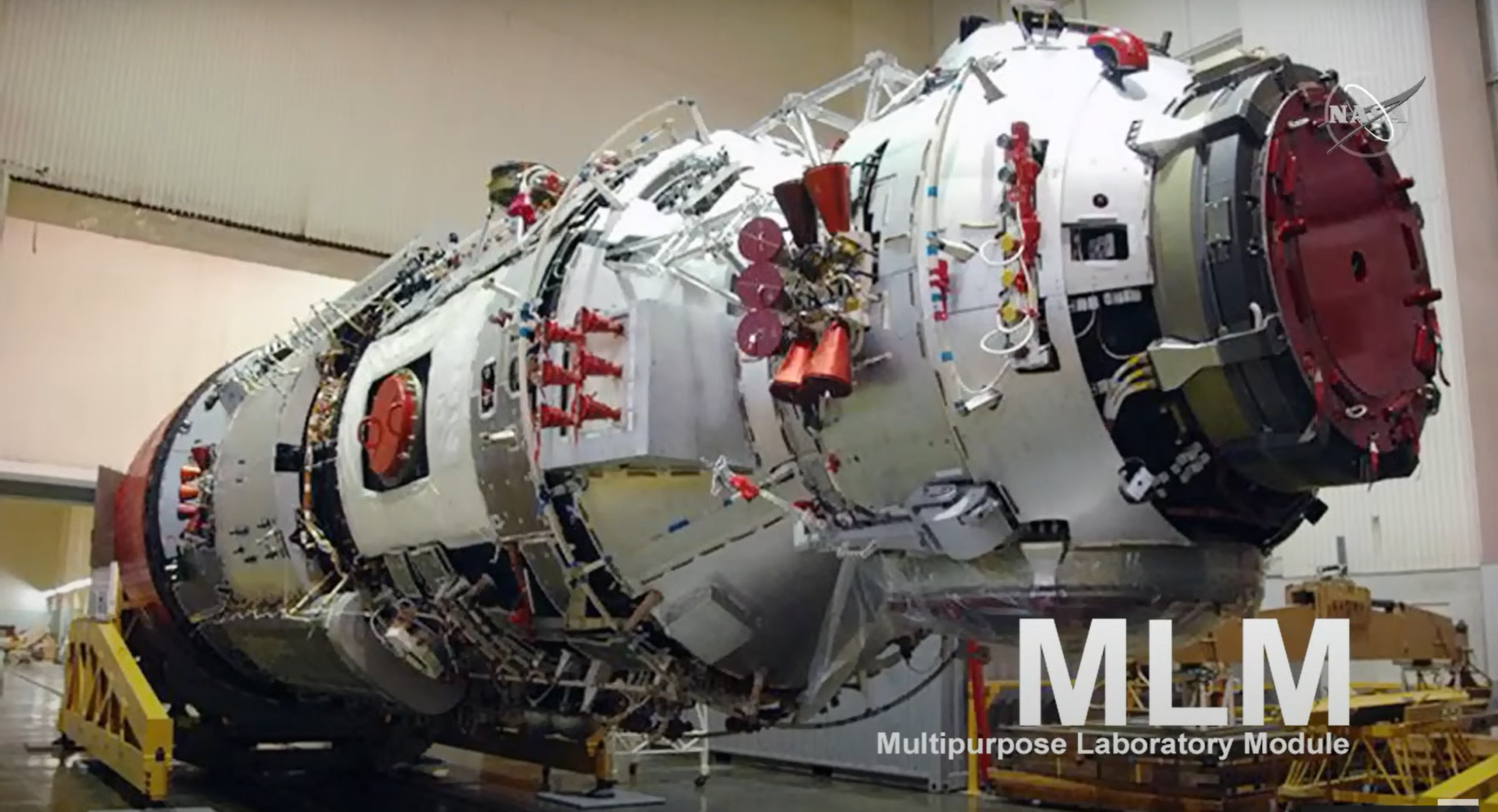
The 11 meter long European Robotic Arm (ERA) provided by the European Space Agency (ESA) is also aboard mounted externally for robotic operations.
Cosmonauts will maneuver the ERA from the Russian segment of the ISS as the main manipulator on the Russian part of the Space Station. Its seven joints can handle multi-tonne payloads with a large range of motion for assembly tasks.
More Pirs departure photos from ISS ESA astronaut Thomas Pesquet:
Départ de cargo, le Progress russe, mais avec une nouveauté de taille : accroché au véhicule, le module DC1 nous a lui aussi quitté après vingt ans de bons et loyaux services, et ce n’est pas tous les jours qu’on voit partir un morceau de l’ISS. 👋 ☄️#MissionAlpha pic.twitter.com/N7JIMr5HKS
— Thomas Pesquet (@Thom_astro) July 27, 2021
My interviews about the ISS events and Starliner rollout and the importance of the mission were featured on Fox 35 Orlando on July 26, WFTV ABC 9 News Orlando on July 22 & 23 and WESH 2 NBC News Orlando on July 18 & 19.
https://www.fox35orlando.com/news/nasa-boeing-prepare-for-second-run-at-starlink-launch
https://www.wesh.com/article/boeing-starliner-now-in-brevard-prepares-for-test-flight-redo/37067233
Watch Ken’s continuing reports about ISS, Starliner and Commercial Crew and Crew Dragon, Artemis and NASA missions, SLS, Orion, SpaceX, Starlink from onsite for live reporting of upcoming and recent SpaceX and ULA launches including Crew 1 & 2, Demo-2, ISS, X-37B, Solar Orbiter, Mars 2020 Perseverance and Curiosity rovers, NRO spysats and more national security missions and more at the Kennedy Space Center and Cape Canaveral Space Force Station.
Stay tuned here for Ken’s continuing Earth and Planetary science and human spaceflight news: www.kenkremer.com –www.spaceupclose.com – twitter @ken_kremer – email: ken at kenkremer.com
Dr. Kremer is a research scientist and journalist based in the KSC area, active in outreach and interviewed regularly on TV and radio about space topics.
………….
Ken’s photos are for sale and he is available for lectures and outreach events
Please consider supporting Ken’s work by purchasing his photos and/or donating at Patreon:
https://www.patreon.com/kenkremer
x



